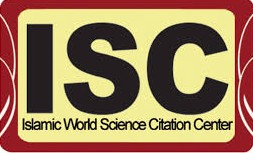Civil Proof through the Judge's Inspection
DOI:
https://doi.org/10.35246/r8vt6t85Keywords:
Proof, Judicial Inspection, Court Authorities, Inspection ProceduresAbstract
In Federal Decree-Law No. 35 of 2022, the legislator in the United Arab Emirates introduced the Law of Evidence in Civil and Commercial Transactions, which outlines methods and means of evidence, including inspection. This legislation grants the UAE court the authority to issue an inspection order, either on its own initiative or at the request of the parties involved in the case. The court has discretionary power to appoint one of its judges to carry out the inspection or to appoint an expert to do so.
The study problem focused on the need for amendments to the articles related to judicial inspection to eliminate ambiguity and avoid misinterpretation, thereby ensuring the legislator’s intent is fulfilled. The study analyzed the subject of civil evidence through judicial inspection using an analytical approach, examining all relevant legal texts and their judicial applications to achieve the study’s goals and resolve its issues.
The study was divided into two sections. The first section addressed the scope of evidence by judicial inspection, discussing the court's powers in inspection-based evidence in the first topic and the subject matter of judicial inspection in the second topic. The second section covered the procedures for judicial inspection, with the first topic dealing with subsidiary procedures for judicial inspection, and the second topic discussing primary procedures for inspection. The study concluded with findings, the most important of which was that the court’s authority to appoint a judge or expert for inspection involves different legal rules for each type. The most important recommendations of the study were the need to provide for the inspection of persons, and the need to introduce some amendments to the texts under study to remove the confusion.
Downloads
References
First: The Books:
I. Talaat Dowdier, Ahmed Abu Al-Wafaa, Commentary on the Texts of the Law of Evidence, Knowledge Foundation, Alexandria, 4th Edition, 1994.
II. Suleiman Markus, Methods of Proof: Witness Testimony, Evidence, Inspection and Experience, Al-Jabalawi Press, 1974, vol. 3.
III. Abd al-Razzaq al-Sanhouri, The mediator in explaining the civil law, Dar al-Nahda Arabic, Egypt, 1968, vol. 2.
IV. Mohamed Hussein Mansour, Electronic Proof, Dar Al-Fikr Al-Jamia, 2009.
V. Ramadan Abu Al-Saud, The Origins of Evidence in Civil and Commercial Matters - The General Theory of Evidence, University House, Beirut, 1994.
VI. Mariam Ahmed Al-Sandal, Explanation of the UAE Civil Procedures Law in accordance with Federal Decree-Law No. 42 of 2022 promulgating the Civil Procedures Law, Dar Al-Nahda Al-Ilmiyya, State of U.A.E., 2023.
VII. Ahmed Hani Mokhtar, Proving the Case before the Urgent Judiciary, University Press, Alexandria, 2003.
Second: The Research and Scientific Theses:
I. Salah Malik Hamoud Al-Azzawi, Preview and its Role in the Judicial Judgment in the Civil Case: A Comparative Study, Master's Thesis, Middle East University, Faculty of Law, Jordan, 2020. http://search.mandumah.com/Record/1129311
II. Abdullah bin Abdulrahman bin Tarihem Al-Subhi, The judge's discretionary authority towards inspection in the Saudi system: An original and applied study, Journal of the Faculty of Islamic and Arabic Studies for Girls in Alexandria, vol. 6, p. 37, 2021. https://doi.org/10.21608/bfda.2021.219091
III. Marwan Salem Orabi Ahmed, Modern Trends in Civil Evidence Methods, Legal Journal, Modern Trends in Civil Evidence Methods, Volume 11, p. 5. https://dx.doi.org/10.21608/jlaw.2022.221290
IV. Salem bin Rashid bin Omran Al-Mutairi, Judicial evidence through inspection in the Saudi system: a comparative study, Journal of the Faculty of Sharia and Law, Tanta, vol. 1, p. 34, 2019. https://doi.org/10.21608/mksq.2019.43572
Third: The Laws:
I. The decree issued by Federal Law No 35 of 2022 regarding the issuance of the Law of Evidence in Civil and Commercial Transactions.
Fourth: Websites:
I. https://evo-eastlaws-com.
Downloads
Published
Issue
Section
License

This work is licensed under a Creative Commons Attribution 4.0 International License.
Copyright and Licensing:
For all articles published in Journal of Legal Sciences, copyright is retained by the authors. Articles are licensed under an open access Creative Commons CC BY 4.0 license, meaning that anyone may download and read the paper for free. In addition, the article may be reused and quoted provided that the original published version is cited. These conditions allow for maximum use and exposure of the work.
Reproducing Published Material from other Publishers: It is absolutely essential that authors obtain permission to reproduce any published material (figures, schemes, tables or any extract of a text) which does not fall into the public domain, or for which they do not hold the copyright. Permission should be requested by the authors from the copyrightholder (usually the Publisher, please refer to the imprint of the individual publications to identify the copyrightholder).
Permission is required for: Your own works published by other Publishers and for which you did not retain copyright.
Substantial extracts from anyones' works or a series of works.
Use of Tables, Graphs, Charts, Schemes and Artworks if they are unaltered or slightly modified.
Photographs for which you do not hold copyright.
Permission is not required for: Reconstruction of your own table with data already published elsewhere. Please notice that in this case you must cite the source of the data in the form of either "Data from..." or "Adapted from...".
Reasonably short quotes are considered fair use and therefore do not require permission.
Graphs, Charts, Schemes and Artworks that are completely redrawn by the authors and significantly changed beyond recognition do not require permission.
Obtaining Permission
In order to avoid unnecessary delays in the publication process, you should start obtaining permissions as early as possible. If in any doubt about the copyright, apply for permission. Journal of Legal Sciences cannot publish material from other publications without permission.
The copyright holder may give you instructions on the form of acknowledgement to be followed; otherwise follow the style: "Reproduced with permission from [author], [book/journal title]; published by [publisher], [year].' at the end of the caption of the Table, Figure or Scheme.











